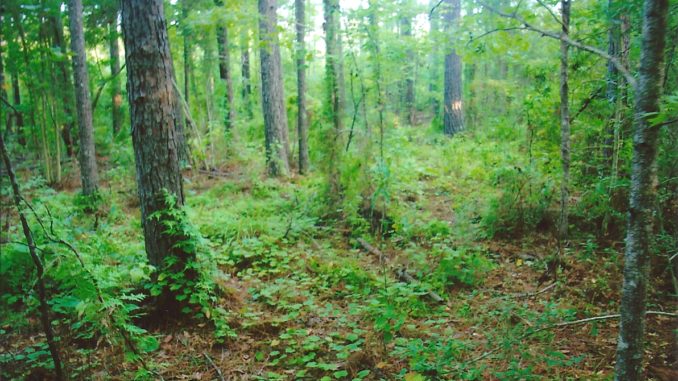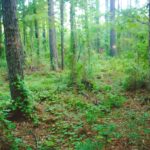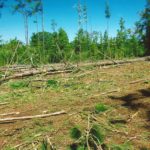
Come into the light and keep the habitat productive.
The key to a successful deer program is to keep the habitat productive for deer throughout the entire year, not just during the hunting season. In fact, when the hunting season comes around, deer growth and development is over, and it is now harvest time. If one has been doing the habitat work, the harvest should be good; if not, it might be a little slow at the skinning shed.
A good timber-management program is the key to a successful deer program in the Bayou State. The state’s forests provide most of the habitat for our deer herds. If the forest is being properly managed, the deer herd will be productive with regard to animal growth, development and reproduction. Harvest time is the time to keep the deer herd in balance with the habitat, so the habitat will be productive.
Unfortunately, timber prices are way down, and many landowners are reluctant to cut their trees. Until the housing market recovers, the price of timber is going to remain low; if there is no sunlight in the deer woods, the deer are going to do without the necessary groceries, which means growth and development will be poor.
Only shade-tolerant plants grow in a forest with a closed canopy. Such plants include poison ivy, Virginia creeper and various species of ferns. While deer do eat these plants, they are not high on the preferred list of deer forages. Shrubs tend to grow tall with little lower branching, and quickly become useless to deer.
If this closed-canopy situation exists throughout the habitat, deer numbers will be low along with the poor growth and development. The only way to improve the habitat is by logging, cutting trees, opening up the canopy and letting sunlight hit the ground.
A lot of hunters and mangers are planting food plots at this time of year, but as previously mentioned, the growing period is over and they aren’t going to do much now, other than attract deer for harvest. Now, if the plots are being planted with various species of clover, the deer will benefit next spring from these forages. But if a hunter is counting on food plots for his deer habitat program, he should have at least 10 percent of his habitat in year-round forages, and depending on the number of deer occupying the habitat, this may not be enough.
I received a letter from Wildlife and Fisheries the other day about keeping deer observation records for the deer section during September through November. This data is being collected statewide, and provides LDWF with information concerning fawn recruitment, the age structure of the herd, the sex ratio of the herd and information regarding relative abundance.
Basically one records the deer sightings during a hunt throughout this time period and submits the information to LDWF for analysis. While it is not a complete picture of the herd, it does help to establish deer-herd trends if done for several years. It also provide current information regarding growth and development and fawn production. It becomes fairly clear that reproduction is good if most adult does are seen with twins.
If only single fawns are observed it should raise a red flag that perhaps all is not well in the forest. If very few racked bucks are seen and most of the observations are bucks with spike antlers or 4 points, perhaps the buck harvest is too high and the buck age structure needs to be improved.
I mentioned last month about setting up cameras in a sawtooth oak patch. These trees were loaded with acorns, and deer have been gobbling them up. Sawtooth oaks produce an acorn about the size of a white oak acorn, but unlike the whiteoak acorns, they begin falling in late August and usually by mid October are gone. While they may not help with the hunting, they certainly will draw deer into an area when the acorn crop is good.
In this little two-acre patch, there have been more than 10 bucks coming and eating the acorns. Half of them are small 1½-year-old bucks with nice spikes, one has three points, and the other half consists of adult bucks ranging from 2-4 years of age.
One of the 2-year-olds is a buck I have named the antelope buck. Its antlers rise up and then curve inward making the shape of a heart, similar to antelope horns. Another buck that looks like a 3-year-old has a messed-up right beam that goes straight up with a couple of small points and a nice left beam with four points. There are three adult 8-pointers and an adult 7-pointer. Only one would be considered a decent shooter buck, but with the 30-acre pine cut that was done a couple of weeks ago, growth and development in the coming years should be good.
In early October, the woods are full of spotted fawns in the Clinton area. As I wrote at this time last year, I don’t get too excited about deer hunting when the bow season opens because of all the fawns. Our peak fawning is in mid-August, so when Oct. 1 rolls around, the fawns are only a couple of months old and are not weaned. Most of the does appear to be in poor condition due to the stress of raising fawns. The deer season is long, so let the fawns keep nursing and growing.
Now in Area 2, the situation is entirely different. On Oct. 1, most of these fawns, which were born in May and June, are 4-5 months old and generally no longer have spots. The does should be close to having recovered from the stress of nursing fawns, and should be starting to pick up weight.
November is the month that gun hunting really cranks up, especially on the wildlife management areas. Read the rules and regulations for the area you are going to hunt and know what the season dates are. They are not the same as the general gun season in the deer areas across the state. Hopefully in the December issue, I will have a good success story or two for you.
One final note, a great velvet buck was killed with a bow on Sherburne WMA on opening day. In the upper part of the Morganza Floodway a doe was photographed with triplets. Looks like the flooding didn’t stress the deer out very much. With the excellent striped-oak acorn crop, the deer herd will have plenty of food to keep them in a productive state.




